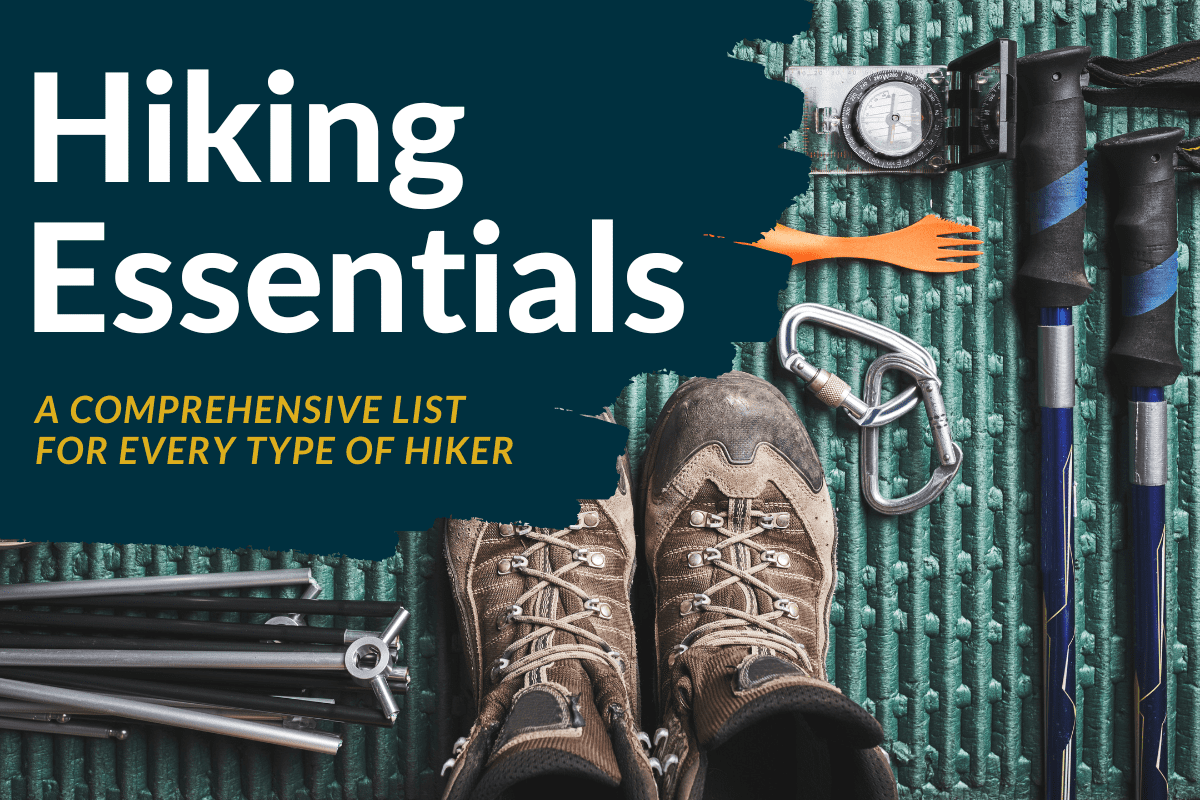Hiking Essentials: A Comprehensive List for Every Type of Hiker
Introduction
Hiking is a fantastic way to explore nature, get some exercise, and connect with nature. However, being prepared for your hiking adventure is crucial to ensure your safety and enjoyment. This comprehensive guide will cover the essentials for hiking and additional items to consider for a successful hike, whether you’re a beginner or an experienced trekker.
Get prepared
The importance of being prepared for a hike cannot be overstated, as it is the key to ensuring a safe, enjoyable, and memorable outdoor adventure. Proper preparation involves researching the trail, understanding the expected weather conditions, and packing the right hiking gear and essentials to meet any challenges along the way.
Adequate planning can help prevent accidents and injuries, reduce the risk of getting lost, and allow you to respond effectively to unexpected situations. Furthermore, being well-prepared contributes to a more positive experience overall, allowing you to focus on the beauty of nature and the exhilaration of the hike, rather than worrying about your safety or comfort.
In essence, taking the time to prepare for a hike is an investment in a successful and fulfilling outdoor experience.
Hiking Checklist: Essential Items for a Successful Adventure
When embarking on a day hike, having the right day hiking gear is crucial for ensuring a safe, comfortable, and enjoyable experience. Among the most important day hiking essentials are, hiking boots or shoes and a reliable backpack. Consider these items for your day hike checklist. Here’s a day hiking essentials list:
Hiking boots or hiking shoes
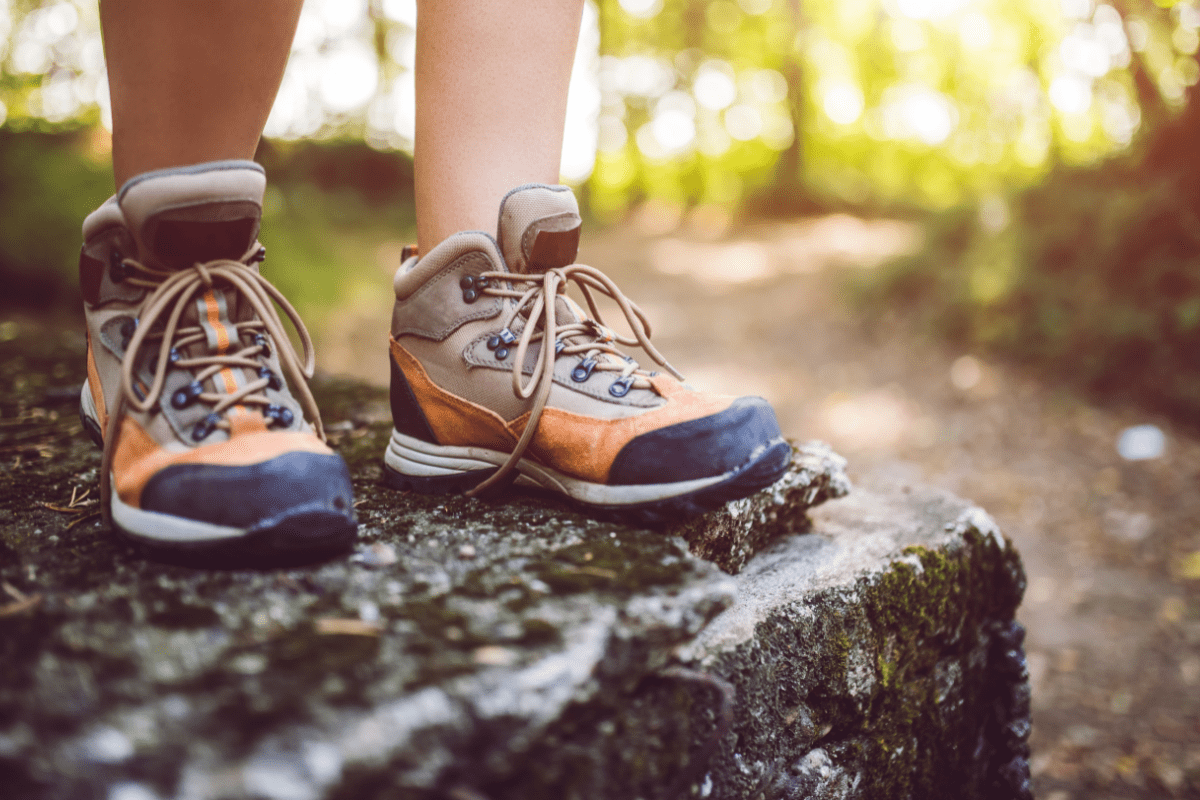
The right footwear plays a significant role in providing comfort, support, and protection on the trail. Depending on the type of hike and terrain, you may opt for hiking boots or hiking shoes:
Hiking boots
These offer more ankle support and are ideal for longer hikes or treks over rugged terrain. They usually have durable soles and sturdy construction to protect your feet from rocks and obstacles. When selecting hiking boots, prioritize fit, support, and comfort. Break them in before your hike to minimize the risk of blisters.
Hiking shoes
These are more suitable for a day hike or well-maintained trails. They are typically lighter and more flexible than boots, providing ample support and comfort for less demanding hikes. Like hiking boots, prioritize fit and comfort when choosing hiking shoes.
Hiking backpack
A good hiking backpack is essential for carrying your hiking gear, food, water, and other necessities. When selecting a hiking backpack, consider the following factors:
Capacity: Choose a backpack with an appropriate capacity for your hike’s duration and your personal needs. For a day, a 20-30 liter backpack should suffice, while multi-day hikes may require a 40-70 liter pack, depending on the amount of gear and supplies you need to carry.
Comfort and fit: Look for a backpack with padded shoulder straps, a supportive hip belt, and a well-ventilated back panel to ensure comfort during long hikes. The backpack should also be adjustable to fit your torso length properly.
Durability and weather resistance: Opt for a backpack made from durable materials, such as nylon or polyester, that can withstand the wear and tear of hiking. A backpack with weather-resistant features, like a water-resistant coating or a built-in rain cover, can help protect your gear in wet conditions.
Weight: A lighter backpack will reduce the strain on your back and shoulders, but don’t sacrifice durability and comfort for the sake of a few ounces. Find a balance between weight and functionality that suits your needs.
Repair kit and basic first aid
A mini repair kit and first aid supplies are essential components of any well-prepared hiker’s gear. The repair kit allows you to address any unexpected gear malfunctions or damage, including fixing broken straps, patching tears, or re-securing loose parts. It typically includes items like a multi-tool, duct tape, and spare cordage, ensuring you can handle a variety of on-trail repairs.
The basic first aid kit is crucial for attending to minor injuries or health issues that may arise during a hike, such as cuts, blisters, or insect bites. A well-stocked kit includes items like adhesive bandages, gauze pads, antiseptic wipes, and pain relievers.
Carrying a first aid kit not only promotes safety but also provides peace of mind, knowing you’re prepared to handle emergencies on the trail.
Having the right hiking gear is essential for a safe, comfortable, and enjoyable experience on the trail. The appropriate gear ensures that you are prepared to handle various terrains, weather conditions, and potential challenges, while also minimizing the risk of injuries and discomfort. Key items, such as proper footwear, a reliable backpack, navigation tools, and the ten essentials, contribute to a successful hiking adventure. Investing in high-quality equipment and prioritizing personal preparedness allows hikers to fully enjoy the great outdoors with confidence and peace of mind.
Packing for different types of hikes
Day hikes vs. multi-day hikes
When packing for a hike, it’s essential to consider the length and type of the excursion. For a day hike, focus on carrying lightweight essentials, such as water, snacks, a first-aid kit, and weather-appropriate clothing.
However, for multi-day hikes, you’ll need additional backpacking gear like a tent, sleeping bag, cooking equipment, and more substantial food supplies. Always ensure that your backpack is comfortable and well-organized to make your hiking experience more enjoyable, regardless of the hike duration.
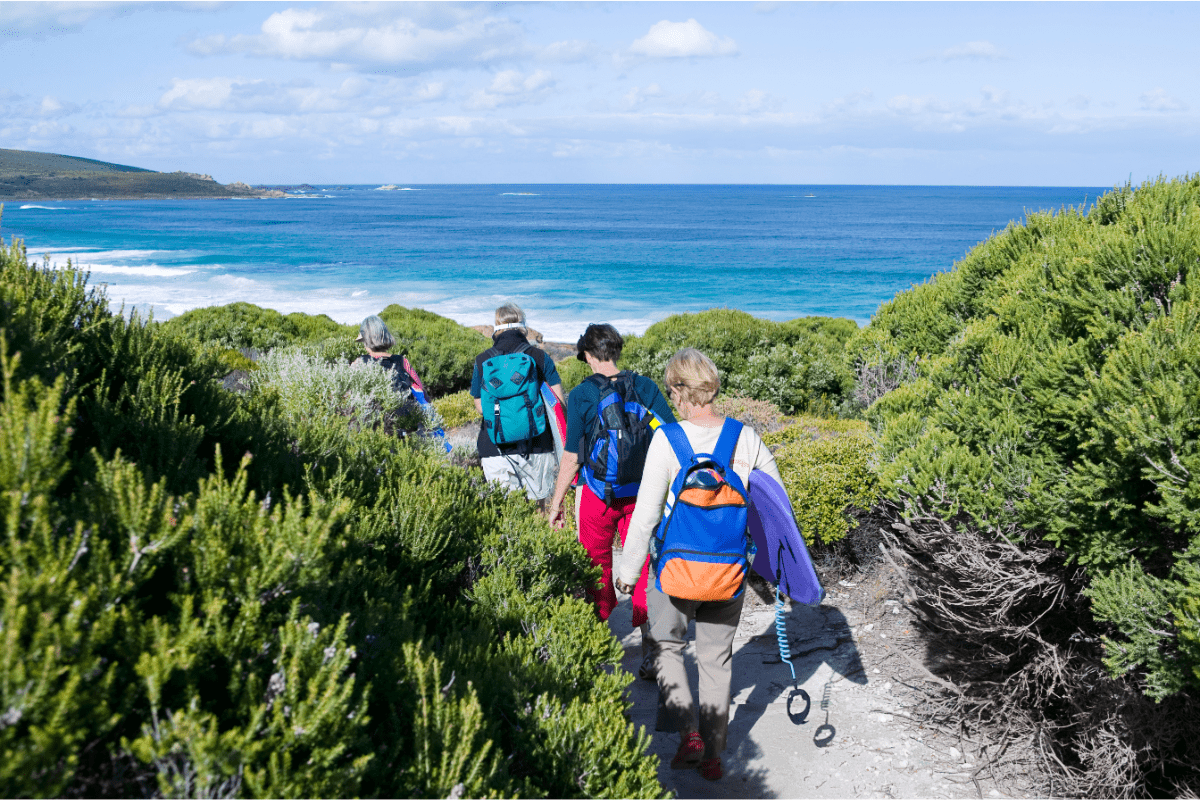
Packing for desert, mountain, and coastal hikes
Different environments present unique challenges, requiring you to adapt your gear accordingly.
For desert hikes, sun protection, hydration, and breathable clothing are vital due to high temperatures and intense sunlight. Mountain hikes often involve rapid weather changes and rugged terrain, necessitating warm layers, waterproof clothing, and sturdy footwear. Coastal hikes may expose you to strong winds, sand, and saltwater, so pack wind-resistant clothing, extra socks, and gear to protect your electronics.
Research the specific conditions of your hiking destination and tailor your packing list to suit the environment.
Adapting your essentials for different climates and weather conditions
Weather conditions and climate can significantly impact your hiking experience, making it crucial to adapt your essentials accordingly. Pack insulating layers, gloves, and a warm hat in cold weather to protect yourself from the elements. For wet or humid climates, bring waterproof clothing and quick-drying fabrics to stay dry and comfortable. In hot weather, prioritize sun protection, lightweight clothing, and ample hydration.
By adjusting your hiking gear and clothing to suit the climate and weather conditions, you can ensure a safer, more comfortable hiking experience, regardless of the destination.
Dressing for the trail – essential clothing for hiking
When it comes to hiking essentials, dressing appropriately for the trail is crucial to ensure a safe and comfortable experience. Your choice of clothing can make a significant difference in how much you enjoy your hike, as well as protect you from the elements. In this section, we’ll explore the key clothing items you should wear to be well-prepared for your next outdoor adventure.
Moisture-wicking base layers
A moisture-wicking base layer is vital for keeping you dry and comfortable on the trail. Opt for lightweight, breathable materials like synthetic fabrics or merino wool, which wick sweat away from your skin and dry quickly.
Avoid cotton as it tends to retain moisture and can leave you feeling damp and cold. Choose long-sleeve shirts and long pants or leggings for additional protection from the sun, insects, and abrasions.
Insulating mid-layers
Depending on the climate and time of year, an insulating mid-layer may be necessary. Fleece jackets or lightweight down jackets work well to trap heat and keep you warm during colder hikes. These materials are also breathable, allowing excess heat and moisture to escape.
Weather-resistant outer layers
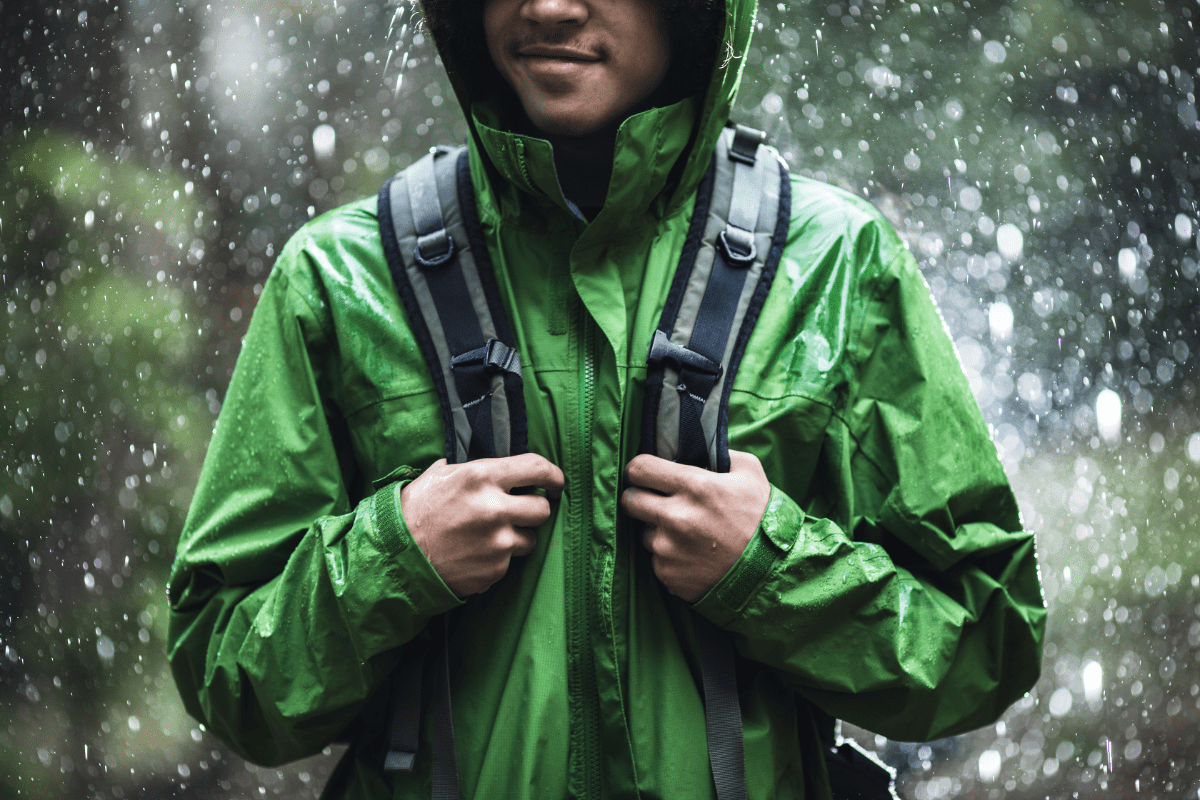
A waterproof and windproof outer layer is essential for protecting you from unpredictable weather conditions. Look for jackets and pants made from materials like Gore-Tex or eVent, which offer excellent breathability while keeping you dry in wet conditions.
When choosing a jacket, opt for one with a hood and adjustable cuffs for added protection. For pants, consider models with zippers or Velcro closures at the ankles, making them easier to put on or take off over your boots.
Hiking pants or shorts
For the lower body, hiking pants or shorts made of quick-drying, durable, and stretchy materials are ideal. They should offer freedom of movement and have useful features like zippered pockets or built-in belts for added convenience. Some hiking pants even come with zip-off legs, allowing you to convert them into shorts in warmer weather.
Hiking footwear
Selecting the right hiking footwear is critical for your comfort and safety on the trail. Your options include hiking shoes, boots, or trail runners, depending on the terrain and the length of your hike. Ensure they provide proper ankle support, have a durable sole with good traction, and are made of water-resistant materials. Don’t forget to break in your footwear before hitting the trail to minimize the risk of blisters.
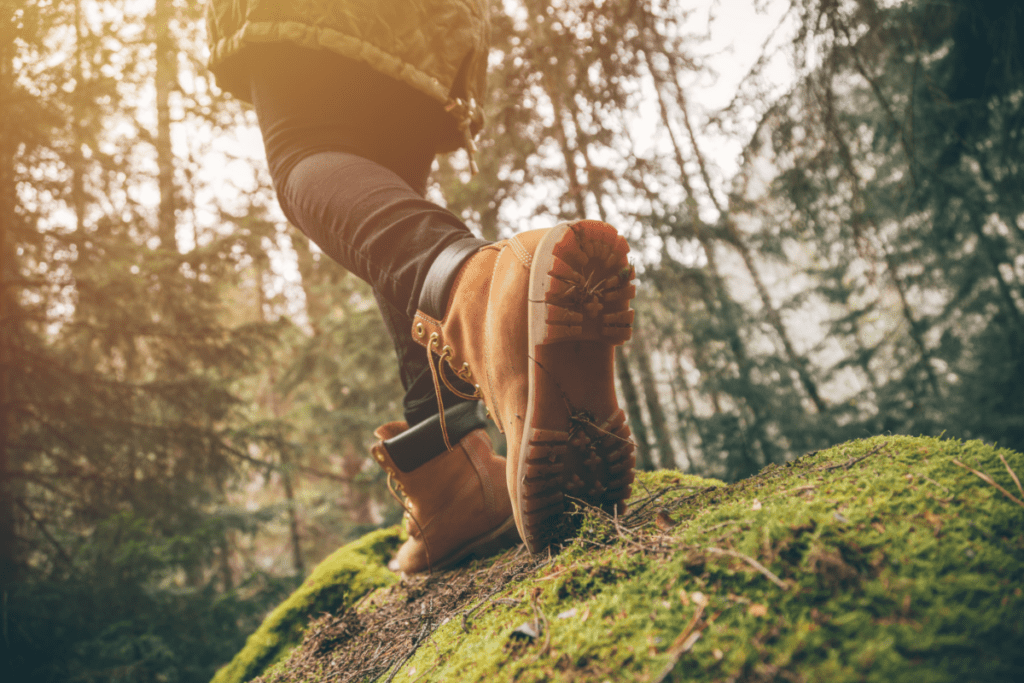
Hiking socks
High-quality hiking socks are just as important as your footwear. Wool socks are great for hiking. There are different weights for wool socks so you can wear one appropriate for the temperatures. Opt for moisture-wicking materials like merino wool socks or synthetic blends to keep your feet dry and comfortable. Cushioned socks can provide additional support and reduce the risk of blisters. It’s always a good idea to carry an extra pair of socks with you on longer hikes.
Accessories

Protective accessories can make a world of difference in your overall hiking experience. Here are some essential accessories to consider.
Gloves
Depending on the climate, gloves can offer protection from cold, wind, and abrasion. Choose lightweight, moisture-wicking gloves for mild conditions, or insulated, waterproof gloves for colder or wetter hikes.
Hat
A wide-brimmed hat or a cap with a neck cover will protect you from the sun’s harmful rays and help regulate your body temperature. In colder weather, opt for a beanie or a fleece-lined hat to keep your head and ears warm.
Buff or Neck Gaiter
A versatile accessory, a Buff or neck gaiter can be worn in multiple ways, such as a headband, neck warmer, or face covering. It can protect you from sun, wind, dust, and insects.
Sunglasses
Invest in a pair of polarized sunglasses with UV protection to shield your eyes from the sun’s glare and harmful rays. Make sure they fit comfortably and securely on your face.
Gaiters
For hikes in muddy or snowy conditions, gaiters can be a game-changer. They cover the tops of your boots and the lower part of your legs, preventing debris, water, or snow from entering your footwear.
Dressing appropriately for your hiking adventure is a critical part of your preparation. By choosing moisture-wicking, breathable, and weather-resistant clothing, you’ll remain comfortable and protected on the trail. Remember to consider the climate, terrain, and length of your hike when selecting your attire, and always pack extra layers and accessories to account for changing conditions.
With the right clothing and hiking gear, you can focus on enjoying the beauty and challenge of the great outdoors, making your hiking experience an unforgettable one. Happy trails!
Additional Hiking Gear to Consider
Here are some other day hiking essentials to add to your hiking packing list.
Trekking Poles
Trekking poles have gained considerable popularity among hikers as an essential accessory, offering a wide range of benefits that substantially improve the overall hiking experience. These versatile and adjustable poles deliver invaluable stability and support, significantly reducing the impact on your knees, hips, and lower back when tackling steep inclines, declines, or navigating uneven terrain.
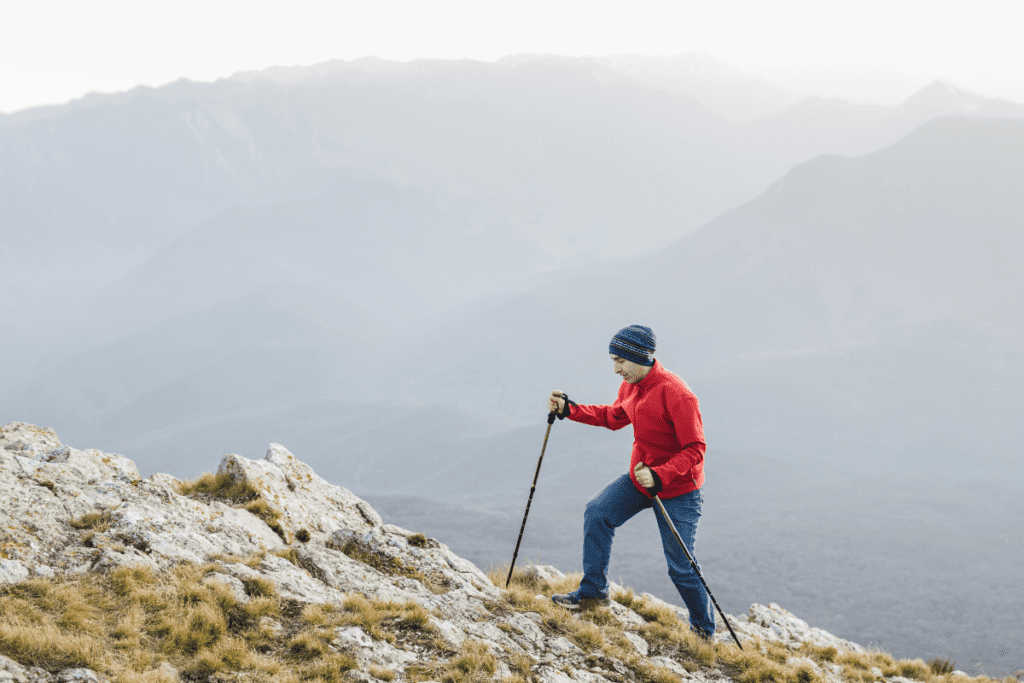
The use of trekking poles goes beyond just physical support; they also play a crucial role in maintaining balance during challenging situations. For instance, they can help hikers cross streams with greater ease or provide extra grip on slippery surfaces. Many hikers also discover that incorporating poles into their hiking routine has a positive impact on their posture and pacing. This, in turn, leads to increased endurance and efficiency on the trail, allowing them to cover longer distances with less fatigue.
When it comes to selecting the right trekking poles, it’s essential to consider several key features to ensure the best performance and comfort throughout your journey. Look for poles with comfortable and ergonomic grips that suit your hand size and shape, adjustable lengths to accommodate your height and varying trail conditions, and shock absorption capabilities to minimize the impact on your joints.
Additionally, consider the materials and construction of the hiking poles, as these factors will influence their weight, durability, and overall performance. Lightweight materials, such as carbon fiber or aluminum, are popular choices for their balance of strength and low weight. By investing in a high-quality pair of trekking poles, you can make your hikes more enjoyable
Insect repellent
Bug spray is a crucial component of any outdoor enthusiast’s arsenal, providing essential protection from potentially harmful insect bites. Not only can insect bites cause discomfort and irritation, but they can also transmit diseases such as Lyme disease, West Nile virus, and Zika virus. Applying insect repellent before venturing into bug-infested areas can significantly reduce the risk of bites and help you enjoy a more pleasant hiking experience.
There are various types of bug spray available, including chemical-based options like DEET and picaridin, and natural alternatives like oil of lemon eucalyptus. When choosing a repellent, consider factors like the duration of protection, effectiveness against specific insects, and potential skin sensitivities.
Applying insect repellent alongside other protective measures, such as wearing long sleeves, pants, and hats, will further enhance your defense against pesky critters on the trail.
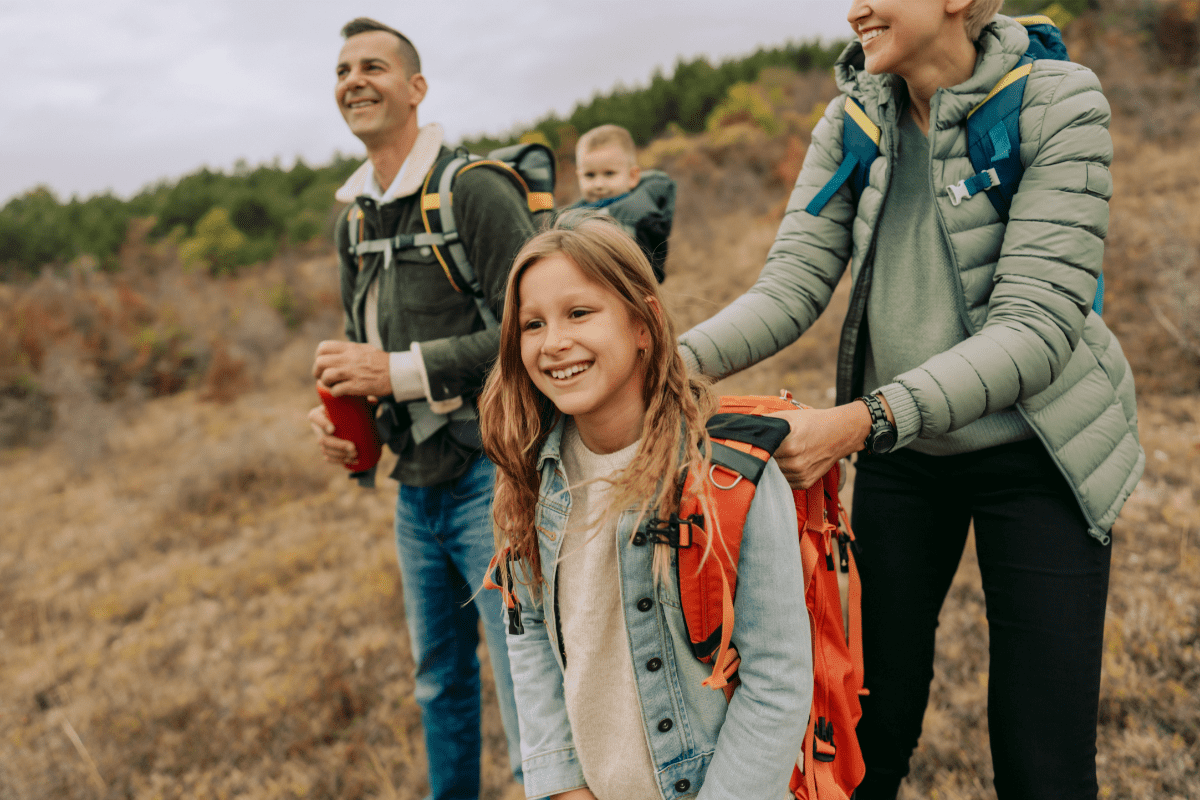
Whistle or Signaling Device
A whistle or signaling device is an essential safety item that every hiker should carry as part of their hiking essentials kit. In the event of an emergency, a loud whistle can help you alert fellow hikers, rescuers, or wildlife to your presence and location.
Unlike shouting, which can strain your voice and consume valuable energy, a whistle can produce a consistent, high-pitched sound that carries much farther, even in windy or dense forest conditions. Additionally, signaling devices like signal mirrors or flares can be invaluable in attracting attention during daylight hours, especially when rescue teams are scanning vast areas from the air.
Having a reliable means of communication is crucial when venturing into the great outdoors, and a whistle or signaling device is a lightweight, simple, and effective tool that should never be overlooked when preparing for your next hiking adventure.
Camera or smartphone
A camera or cell phone is an excellent addition to your hiking gear, allowing you to capture and preserve the breathtaking scenery and memorable moments encountered during your outdoor adventures.
With advancements in technology, smartphones have become increasingly capable of producing high-quality images and videos, rivaling traditional cameras in many aspects. Beyond photography, smartphones offer numerous features that can enhance your hiking experiences, such as GPS navigation, weather updates, and access to trail maps or guide apps. However, it’s essential to be mindful of battery life and have a backup power source, like a portable charger, when relying on your smartphone in the wilderness. Alternatively, if you’re an avid photographer or desire more specialized features, investing in a dedicated camera can provide you with greater creative control, lens options, and image quality.
Whether you choose a cell phone or a camera, having the means to document your journey allows you to share your experiences and relive the beauty of the great outdoors long after you’ve returned home.
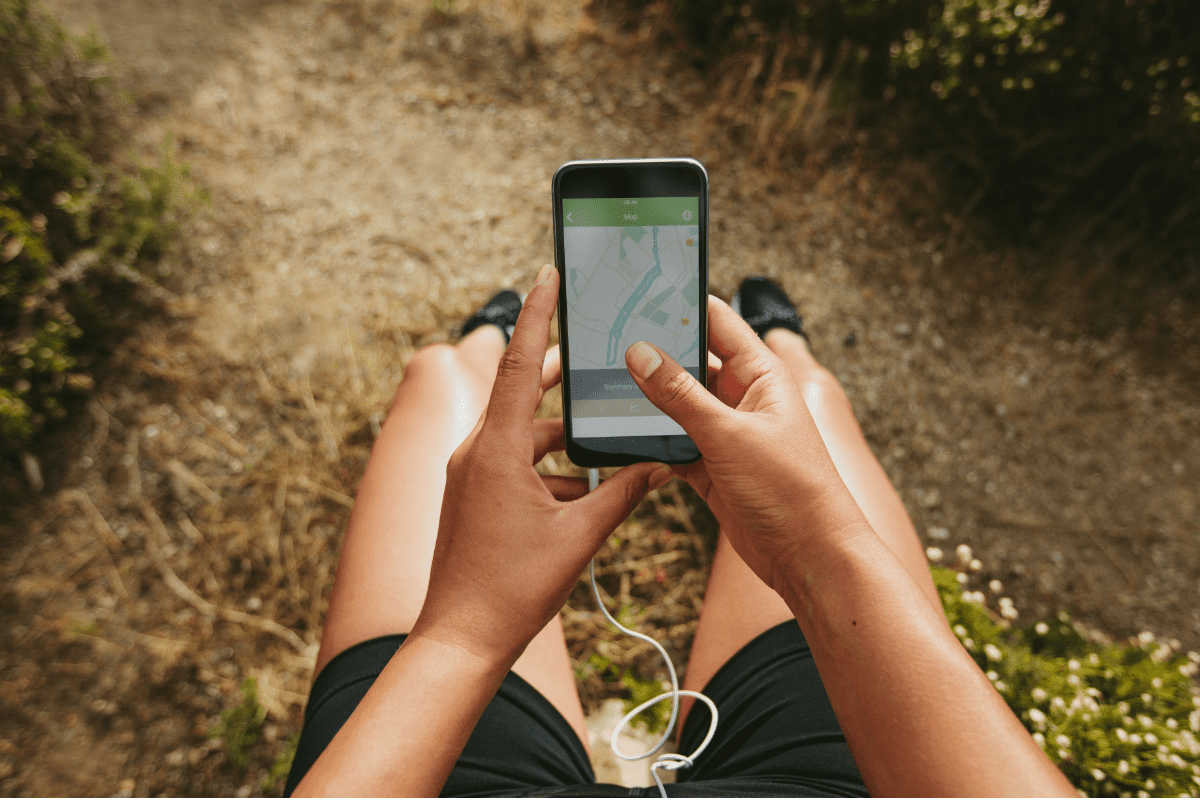
Personal hygiene items
Personal hygiene items play a crucial role in ensuring a comfortable and healthy hiking experience. Maintaining proper hygiene while on the trail can help prevent illnesses, infections, and discomfort, as well as minimize your environmental impact.
Key items to include in your hiking essentials are biodegradable soap or wipes, a compact and quick-drying microfiber towel, hand sanitizer, and toilet paper. Remember to practice Leave No Trace principles by disposing of waste responsibly, using soap at least 200 feet away from water sources, and packing out used toilet paper in a sealed bag.
Other hygiene items to consider are a toothbrush and toothpaste, a small comb or brush, and feminine hygiene products when applicable. By keeping yourself clean and fresh, you can focus on enjoying your outdoor adventure while also preserving the pristine nature of the environment for future generations to appreciate.
Bear spray
Bear spray is an additional hiking gear item to consider when venturing into areas inhabited by bears. While carrying bear spray is not a guarantee against a bear encounter or attack, it is a valuable tool that can help hikers feel more secure and prepared when exploring bear country.
Large plastic trash bag
A large heavy-duty bag like a trash compactor bag can be a great item to carry. It can help keep your pack contents dry or even work as emergency rain gear if you cut a few holes for your arms and neck. It takes up little space in your backpack.
Essential Hiking Skills for Every Hiker
While having the right hiking gear is crucial for a successful hiking experience, it’s equally important to possess essential hiking skills to navigate the great outdoors safely and responsibly. Merely owning the gear is not enough; knowing how to use it effectively and being able to apply practical skills in real-world situations can make a significant difference in your hiking experience.
Essential hiking skills include map reading and navigation, recognizing signs of altitude sickness, responding to wildlife encounters, and assessing and mitigating risks on the trail. By combining these skills with the appropriate gear, hikers can better handle unexpected challenges and emergencies, ultimately ensuring a safer and more enjoyable adventure in nature.

Basic first aid and CPR
Having a fundamental understanding of first aid and CPR is crucial for any hiker, as accidents or medical emergencies can happen on the trail. Being able to administer immediate care for minor injuries, such as cuts, blisters, or sprains, can prevent complications and improve the overall hiking experience.
In more severe cases, knowing CPR can potentially save a life, especially when professional help may take hours to arrive. Taking a certified first aid and CPR course can equip you with these invaluable skills, preparing you to respond effectively in case of emergencies.
Physical Preparedness for Hiking
Before hitting the trail, it’s essential to ensure that you’re physically prepared for the demands of hiking. A good level of physical fitness can help minimize the risk of injuries, improve endurance, and enhance your overall experience. Here are some key aspects of physical preparedness to consider
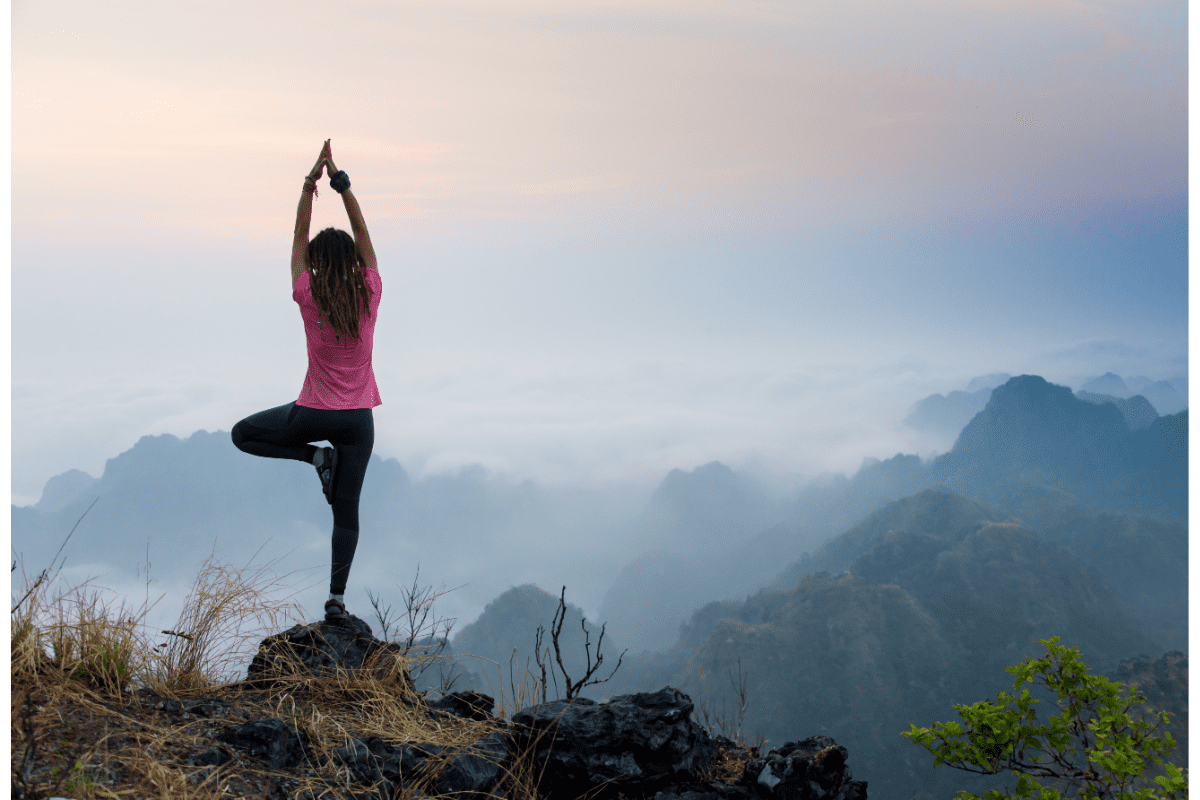
- Cardiovascular fitness: Engage in regular aerobic exercises, such as jogging or cycling, to build endurance and improve your heart and lung function.
- Strength training: Incorporate exercises focusing on your legs, core, and upper body to build the necessary muscle to support hiking activities.
- Flexibility and balance: Practice stretching exercises and activities like yoga to improve your flexibility, balance, and body awareness.
- Hiking-specific training: Condition your body by walking or hiking on similar terrain to your planned hike, wearing a loaded backpack, or practicing uphill and downhill techniques.
- Gradual progression: Start with shorter hikes on smooth trails and gradually increase distance, elevation gain, and difficulty as your fitness level improves. Steep hikes can really get you ready and make your shorter hikes feel very easy.
Map reading and navigation skills
Possessing map reading and navigation skills is essential for any hiker, regardless of the terrain or distance. While GPS devices and smartphones can be helpful, batteries can die, and reception may be unavailable in remote areas.
Knowing how to read a topographic map and use a compass can help you stay on track and find your way if you get lost. Additionally, understanding basic navigation techniques, such as identifying landmarks and following trail markers, can significantly enhance your hiking experience and safety.
Recognizing signs of altitude sickness
Altitude sickness can affect hikers at elevations as low as 8,000 feet, making it essential to recognize its signs and symptoms. Symptoms of altitude sickness include headache, nausea, dizziness, fatigue, and shortness of breath. If you or a hiking companion experience these symptoms, it’s crucial to descend to a lower elevation immediately or seek medical assistance. Being aware of these signs and responding quickly can help prevent more severe complications and make your high-altitude hiking experience more enjoyable.
How to respond to wildlife encounters
Encountering wildlife is part of the hiking experience, and knowing how to respond is crucial for both your safety and the animal’s well-being. Familiarize yourself with the types of wildlife in the area you’re hiking, and learn the recommended response for each species. For example, when encountering a bear, it’s essential to speak calmly, avoid direct eye contact, and slowly back away without turning your back. By understanding how to react to different wildlife encounters, you can help preserve the natural balance and ensure a safe and respectful experience for all.
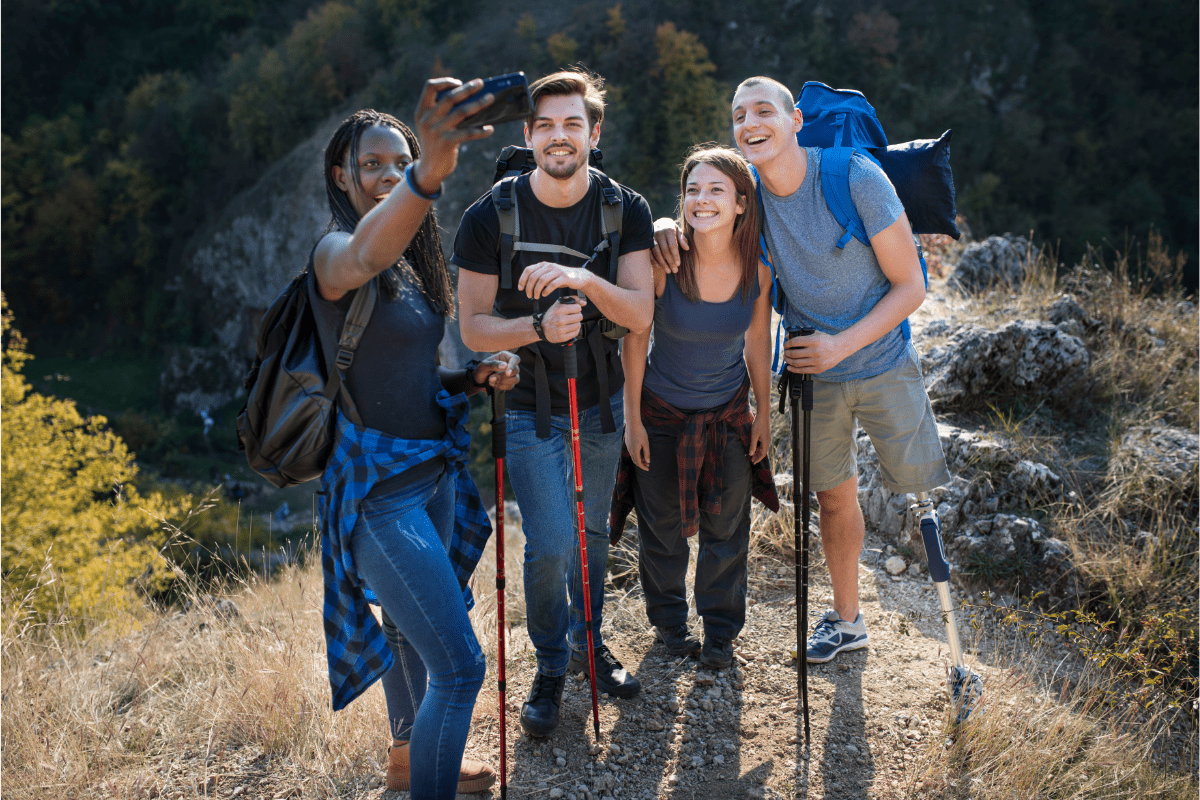
Assessing and mitigating risks during a hike
Being able to assess and mitigate risks during a hike is a critical skill for ensuring a safe and enjoyable experience. Start by researching potential hazards in the area, such as unstable terrain, river crossings, or inclement weather. Once on the trail, remain vigilant and continually assess your surroundings for any potential dangers. Practice good decision-making by knowing when to turn back or alter your route, and always prioritize safety overreaching your destination. By developing these risk management skills, you can better protect yourself and your hiking companions while exploring the great outdoors.
The Ten Essentials System

The ten essentials are the fundamental items that every hiker should carry to ensure their safety, comfort, and enjoyment while out on the trail. These essentials are designed to address the most common challenges and needs encountered during a hike, such as navigation, sun protection, insulation, illumination, first aid kit, fire-starting, repairs, nutrition, hydration, and emergency shelter.
While the specific items in your hiking essentials list may vary depending on factors like the length of the hike, the terrain, and weather conditions, the core principles remain the same. Carrying these essentials allows hikers to adapt to changing situations, manage unexpected obstacles, and minimize the risk of accidents or emergencies.
By understanding and prioritizing your essential hiking gear, you can set yourself up for a successful and enjoyable trek through the great outdoors.
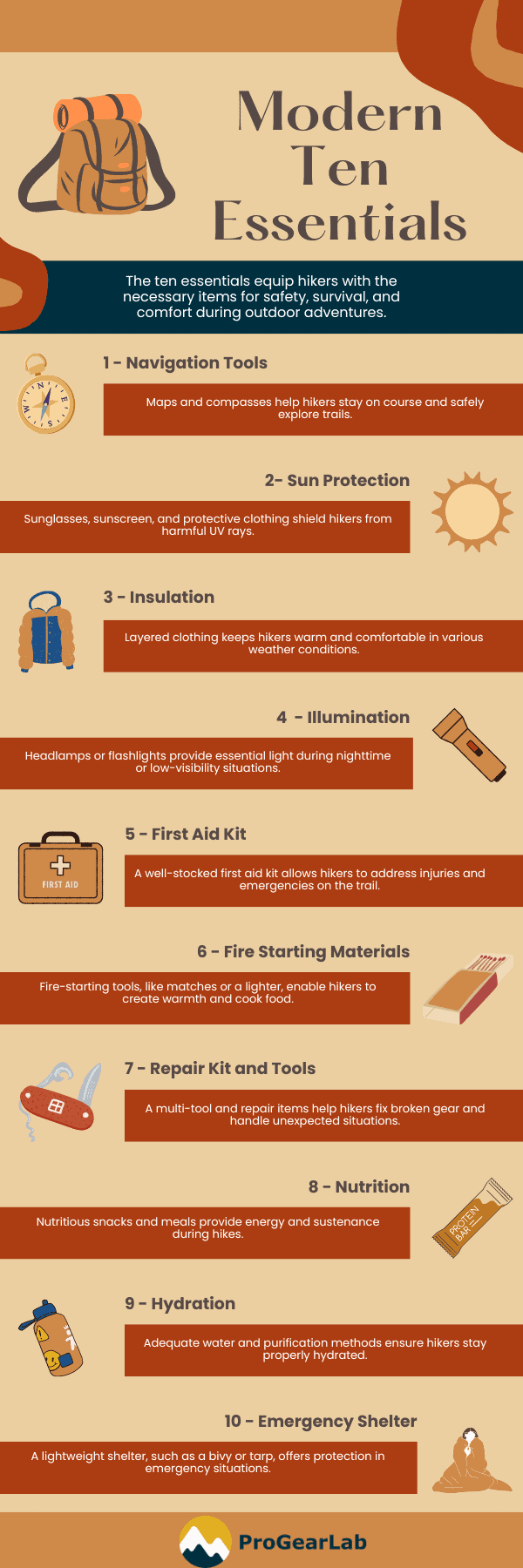
Navigation tools
- Map and compass: A topographic map and a compass are essential for navigating unfamiliar terrain. They work even when batteries die or there’s no cell reception.
- GPS device: A handheld GPS device or a GPS-enabled smartphone app can provide accurate location information and help you navigate trails more easily.

Sun protection
- Sunscreen: Protect your skin from harmful UV rays by applying a broad-spectrum sunscreen with an SPF of 30 or higher.
- Sunglasses: Look for sunglasses that block 100% of UVA and UVB rays to shield your eyes from the sun. This is very important if you are on snow to prevent snow blindness.
- Protective clothing: Wear lightweight, long-sleeved shirts and pants, and a wide-brimmed hat to protect your skin from the sun.
Insulation
- Layered clothing: Dress in layers to adapt to changing weather conditions. Start with moisture-wicking base layers, add insulating mid-layers like fleece, and finish with a waterproof and windproof outer layer.
- Rain gear: Carry a lightweight, waterproof rain jacket and pants to keep you dry during unexpected rain showers.

Illumination
- Headlamp: A hands-free headlamp provides light for hiking in low-light conditions and setting up camp in the dark.
- Flashlight: A backup flashlight with extra batteries is a good addition to your day hiking gear in case your headlamp fails.
First-aid kit
- Always pack a basic first aid kit to treat minor injuries and ailments, such as cuts, blisters, and headaches. Customize your hiking first aid kit according to your specific needs and the length of your hike. Adventure medical kits make several sizes of medical kits.
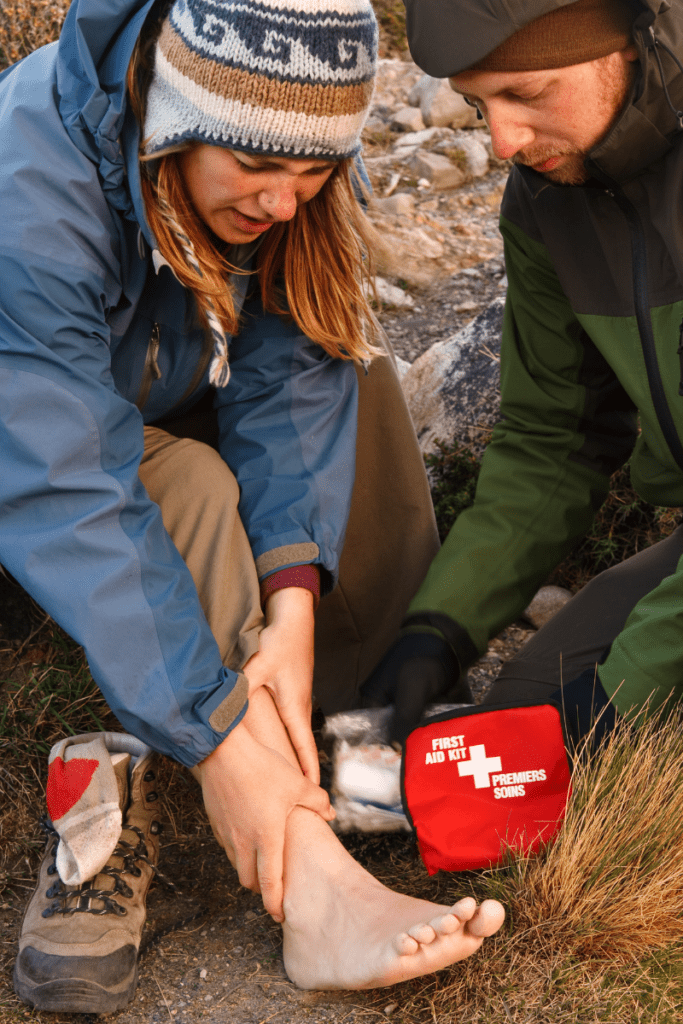
Fire-starting materials
- Waterproof matches: These can be essential for starting a fire in damp conditions.
- Fire starter: A compact fire starter (such as fire steel or magnesium rod) can help ignite a fire quickly and easily.
Repair kit and tools
- Multi-tool: A versatile multi-tool with a knife, scissors, and screwdrivers can be invaluable for making trailside repairs.
- Duct tape: This versatile repair item can fix a variety of outdoor gear issues, from patching a hole in a tent to securing a broken strap on a backpack.
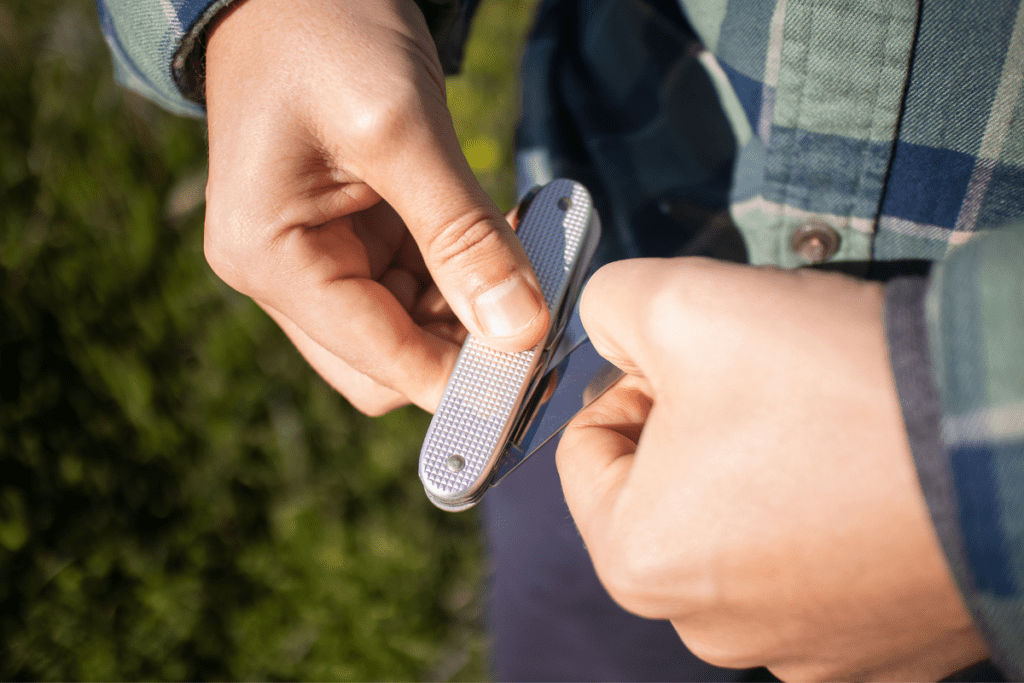
Nutrition
- Trail snacks: Pack high-energy, non-perishable snacks like nuts, energy bars, and dried fruit to keep your energy levels up during the hike.
- Emergency food: Bring extra food supplies in case your hike takes longer than anticipated, or you encounter an unexpected situation.
Hydration
- Water bottle: A good water bottle will be your trusty companion. Carry enough water to last for the duration of your hike, considering factors like temperature, exertion level, and availability of water sources.
- Water filtration system: A portable water filter or purification tablets can help you access safe drinking water from natural sources during your hike.

Emergency Shelter
- Lightweight tent: For multi-day hikes, pack a lightweight tent for protection from the elements.
- Emergency bivy: A compact bivy sack or space blanket can provide emergency shelter and insulation in case of an unplanned overnight stay.
Frequently Asked Questions
How much water should I carry?
As a general guideline, you should consume at least half a liter of water per hour of moderate activity in moderate temperatures. Carry more water if you’re hiking in hot or dry conditions, and always bring extra in case of emergencies.
How do I choose the right hiking footwear?
Selecting the right hiking footwear depends on factors like the terrain, trail conditions, and your personal comfort preferences. For well-maintained trails with minimal elevation gain, trail running shoes or lightweight hiking shoes may suffice.
However, for more rugged terrain or longer hikes, opt for sturdy hiking boots with ankle support and a durable, grippy sole. Always prioritize fit and comfort, and break in your footwear before embarking on long hikes to minimize the risk of blisters.
What to do in case of a hiking emergency?
In the event of a hiking emergency, remain calm and assess the situation. If you’re lost, stop moving, and try to retrace your steps or use navigation tools to determine your location.
In case of injury, administer first aid as needed and assess whether it’s safe to continue or if you need to seek help. Always carry a whistle, a fully charged phone, or a communication device, and be prepared to signal for help if necessary.
What is the best way to dress in layers?
Start with a moisture-wicking base layer to keep sweat away from your skin. Add an insulating mid-layer, such as fleece or down, to retain body heat. Finally, wear a waterproof and windproof outer layer to protect yourself from the elements.

Can I use my smartphone for navigation?
While smartphones can be a valuable navigation tool on the trail, it’s essential to use them in conjunction with traditional navigation methods, like a map and compass. Download offline maps or GPS apps, and ensure your device has sufficient battery life.
Be aware that cell reception may be limited in remote areas, so don’t rely solely on your smartphone for navigation.
Summary
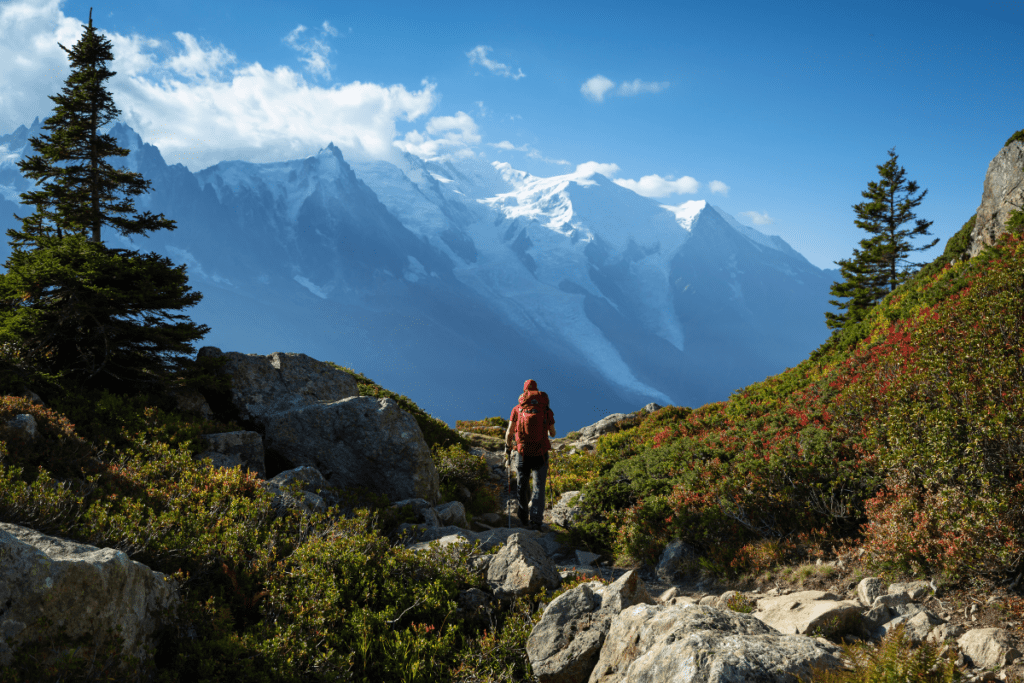
In conclusion, being well-prepared and equipped with the right hiking gear and essential skills is crucial for a successful and enjoyable hiking experience. From packing the appropriate essentials for different types of hikes to knowing how to handle emergencies on the trail, proper preparation can significantly enhance your safety and overall experience. By understanding the importance of essential hiking gear, developing vital skills, and adapting your approach based on the specific hike, you can confidently embark on any adventure and fully appreciate the beauty and rewards of exploring the great outdoors. So, gear up, hone your skills, and embrace the journey that awaits you on the trail.

